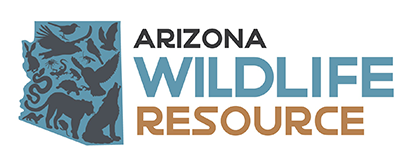Lead Poisoning in Animals & Humans
We are not against hunting. However, hunters tend to use lead, which has a negative effect on all avian species. Fragmented lead pieces in the environment are scavenged by birds, which have a completely different digestive system, and small pieces ingested through scavenging quickly become fatal.
Many advances have been made in the way of non-lead ammunition; however, it requires an extra step and probably some persuading. To learn more, check out the other links on this page.

Common Sources of Lead Exposure for Birds
Lead is a highly toxic metal that can be fatal to birds if not addressed promptly. Birds are exposed to lead in various ways, depending on their feeding habits and environments. This exposure has devastating consequences for bird populations, wildlife health, and even human communities.
Ingesting Spent Ammunition
Birds, especially scavengers like eagles and vultures, may accidentally consume lead fragments from shotgun pellets or ammunition embedded in carcasses left by hunters. This is a primary pathway for lead toxicity in wildlife.
Swallowing Lead Fishing Tackle
Waterfowl and diving birds, such as Common Loons, often forage on lake and river bottoms, where they may ingest small lead fishing weights or tackle.
Consuming Lead in Gut Piles
Raptors such as Bald Eagles often scavenge on gut piles left by hunters. If the carcasses contain lead fragments, the birds are at significant risk.
Ingesting Lead in Domestic Settings
Pet birds, including parrots and cockatiel
The Effects of Lead Shot on Birds & Humans
Species Impacted by Lead Poisoning
Waterfowl
Ducks, geese, and swans are particularly at risk as they forage in wetlands where lead shot accumulates.
Raptors
Birds of prey like eagles, hawks, and vultures often ingest lead fragments when feeding on carcasses left behind by hunters.
Smaller Birds
Songbirds and other small species may ingest lead while foraging on contaminated ground. Small amounts of lead are highly toxic.
Symptoms of Lead Poisoning
Neurological Damage
Birds may display tremors, weakness, or an inability to fly due to nerve and brain damage.
Organ Failure
Lead toxicity damages the kidneys and liver, often leading to organ failure.
Reproductive Issues
Lead affects calcium metabolism, reducing eggshell thickness and lowering reproductive success.
Death
Lead poisoning results in death.
Humans Most Affected by Lead Poisoning
Children
More susceptible to developmental and neurological damage.
Pregnant Women
Heightened risks for both mother and fetus.
Frequent Game Consumers
Individuals consuming high amounts of lead-shot game.
Consequences of Lead Poisoning
Neurological Damage
Chronic lead exposure can cause cognitive decline, memory loss, and other nervous system issues.
Organ Failure
Long-term exposure increases the risk of kidney and cardiovascular problems.
Reproductive Issues
Lead exposure can affect fertility and fetal development in pregnant women.
Chronic Health Risks
Prolonged lead exposure can have lifelong health consequences.
Birds, particularly waterfowl and raptors, are highly susceptible to lead poisoning through the ingestion of spent lead shot. In Europe, it’s estimated that lead poisoning kills approximately one million waterbirds annually, with an additional three million suffering sub-lethal effects.
Smaller bird species, such as songbirds, can also ingest lead pellets while foraging, leading to severe health consequences or death due to their smaller body size and higher sensitivity to toxins.
Hunters consuming game harvested with lead ammunition may experience elevated blood lead levels. A study documented a hunter with a blood lead level of 74.7 µg/dL, significantly higher than the CDC’s reference level of 5 µg/dL, due to daily consumption of lead-shot meat.
Another study found that hunters had blood lead levels of 3.4 µg/dL, double that of non-hunters (1.7 µg/dL), indicating increased exposure from consuming game harvested with lead ammunition.
